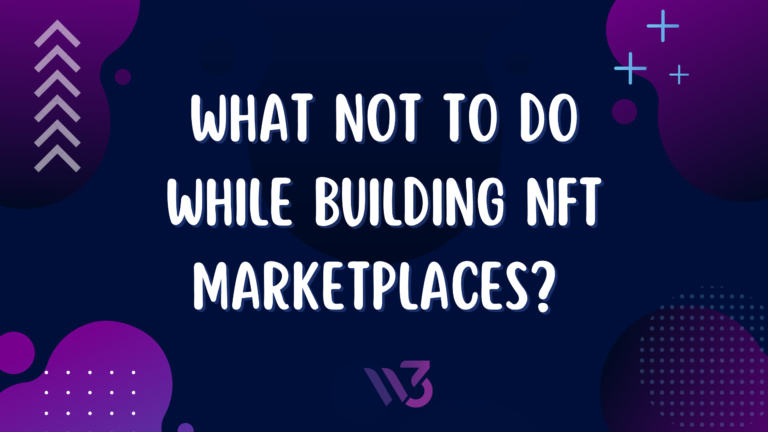A blockchain wallet is the first thing you’ll need before you buy any cryptocurrencies. But before you get one for yourself, it’s best to familiarise yourself with what is a blockchain wallet and the various types of wallets available.
There are many standalone blockchain wallets in the market. But there are also wallets that are included in a user’s account in a crypto exchange or trading platform.
What is a Blockchain Wallet?
Unlike the regular wallets we carry around in our pockets to keep our money, a blockchain wallet doesn’t actually store physical cryptocurrencies (since digital assets are, after all, virtual in nature). Instead, it simply keeps a record of every single transaction that you have made then keeps those records on the blockchain.
A blockchain wallet is an executable code that allows users to send and receive digital currencies while also monitoring their balance as well as their transaction history.
The blockchain wallet was developed as early as 2011 by Blockchain – a company created by Nicolas Cary and Peter Smith – with their wallet on Blockchain.com (previously known as Blockchain.info) being one of the most popular ones in the market. Since then, several proprietary applications have been integrated into Blockchain wallets to improve user experience and security.
How a Blockchain Wallet Works?
A blockchain wallet stores the public and private keys of every transaction. For a payment transaction to get authorized, the wallet has to connect with the blockchain to allow the owner of the wallet to send or receive one or more cryptocurrencies.
That’s just what happens on the surface. You must be wondering, what happens behind the scenes that ensure the safe conduction of crypto transactions?
To have a better idea of how blockchain wallets function, we have to first understand what are private and public keys.
Public and Private Keys – the Nuts and Bolts of a Blockchain Wallet
These keys are simply different pairs of long cryptographic numbers. As their names imply, users can share their public keys with anybody but the private keys are hidden.
The public key is used to unlock a specific code on the blockchain, where it will only occur when the public key is matched with the right private key. The content of the wallets can only be seen once the code is matched.
Likewise, when the private and public keys of a transaction are an exact match, you will be able to view the value of your assets in your blockchain wallet.
For example:
You are about to receive payment in Bitcoin into your wallet. The sender will then assign your wallet address as the owner of the particular currency.
But before you will be able to do anything with your asset, the public keys allocated to the digital asset must match with your wallet’s private key. If both keys are a match, you’ll see an increase in balance.
Once that happens, the transaction is deemed to be completed, recorded on Blockchain, and changes are reflected in the wallet.
Next, let’s talk about the various types of blockchain wallet.
Types of Blockchain Wallet
When you purchase crypto from an exchange, you can technically store the crypto where you purchased it. If you purchase small amounts of cryptocurrency, then you can find it in your accounts initially, like a bank account balance. This is one of the basic crypto wallet categories you get by default when you purchase cryptocurrency. Most important of all, the wallets on the exchanges will also offer certain layers of security.
For example, cryptocurrency exchanges have insurance policies for safeguards against losses. In addition, funds are generally stored in the accounts with FDIC insurance. However, these security measures are sometimes not enough for addressing your concerns of safe storage for cryptocurrency. This is where you would need to find the suitable types of crypto wallets which can offer security. Let us take a look at the common types of wallets you can find for crypto assets.
Hot Wallets
One of the foremost crypto wallet types brings hot wallets to the discussion. Hot wallets are basically the wallets that connect to the internet and generally offer lesser security. On the other hand, hot wallets offer better accessibility due to their connection with the internet. Even if hot wallets are vulnerable to fraudsters and hacker attacks, they are highly user-friendly.
Types of Hot Wallets
Generally, you would find all the software wallets in the hot crypto wallet types. The most common types of hot wallets include mobile wallets, web wallets, and desktop wallets.
-
Desktop Wallets
Desktop wallets involve downloading an application to your desktop or laptop. The application will help in generating a data file for holding the keys of the users. Users should also create a password for accessing the keys. Desktop wallets offer the advantage of ownership of your key, albeit with risks of physical damage or malware/virus infection.
-
Web Wallets
Web wallets are one of the prominent types of crypto wallets in the category of hot wallets. You can access the web wallets through a web browser without the need for downloading any specialized software or application. With the help of browser access, web wallets ensure accessibility for crypto assets from any location with your password, a device, and a web browser. In the case of web wallets, the website would have ownership of the keys to your crypto assets. However, alternatives like multi-sig wallets offer a certain level of control to users over their crypto wallets.
-
Mobile Wallets
Mobile wallets are also one of the crucial crypto wallet categories in hot wallets with functionality similar to desktop wallets. You have to install a mobile application on the phone, which would serve as the hot wallet. Mobile wallets present better flexibility for exchanging funds while presenting some security risks.
Cold Wallets
Cold wallets are another prominent answer to ‘What are the different types of cryptocurrency wallets?’ next to hot wallets. They are basically specific variations of cryptocurrency wallets that are designed for cold storage. Cold storage implies that the wallets store the crypto tokens of users in offline mode. As a result, they serve as vaults that you can use for everyday transactions. Interestingly, there are some types of cold wallets that connect to the internet even while retaining their basic working functionality.
Therefore, it is quite clear that people with a larger amount of crypto assets would find better benefits with cold wallets. However, a combination of both cold and hot wallets could present better value advantages for crypto users. For example, a large share of funds could be stored securely in a cold wallet, with the hot wallet allowing better flexibility for funds. So, a hybrid approach with the two crypto wallet categories blended together could offer improved security alongside flexibility.
Types of Cold Wallets
The next important point of discussion regarding crypto wallet types would refer to the variants in the cold wallet category. You can find two common variants of cold wallets such as paper wallets and hardware wallets.
-
Paper Wallets
The name gives a lot away about paper wallets when it comes to understanding them as one of the types of crypto wallets. Paper wallets are nothing but physical pieces of paper. The paper must contain all the data you would need for accessing the cryptocurrency. Cold wallets generally offer additional security.
However, the same does not hold strong in the case of paper wallets. In event of losing the paper document, you have the risk of losing the crypto assets in the wallet. Furthermore, paper wallets also present the setbacks of limitations in sending partial funds easily. In addition, the time-consuming nature of transactions with paper wallets also presents formidable setbacks for their use.
-
Hardware Wallets
Hardware wallets, on the other hand, truly define the principles of designing a cold wallet. They offer security by completely avoiding the online exposure of private keys. Hardware wallets save private keys on a physical device in an offline environment and work just like a flash drive. Hardware wallets are one of the most easy-to-use crypto wallet types in cold wallets because you can connect them easily to computers or any other device by using a USB drive.
Even if the device is connected to the internet, the private key does not leave the device. The device would request the transaction details and provide validation for the data, thereby completing the transaction. Then, the transaction details go to the online network, where it is documented. Some of the popular hardware wallets which are in use presently include Trezor, Ledger, and many others from different manufacturers.
Bottom Line
The understanding of different types of crypto wallets is quite essential for sensible investment in cryptocurrencies. One of the formidable aspects which have been clearly evident in recent times in the domain of cryptocurrency is volatility. At the same time, security is also emerging as a vital concern with respect to investments in cryptocurrency.
However, a detailed overview of crypto wallets and their working alongside different variants helps users in finding suitable choices according to their requirements. The common variants of crypto wallets, hot wallets, and cold wallets, have their share of advantages and setbacks. You need to find the one which suits your needs best for dealing with cryptocurrencies. Learn more about crypto wallets and make the right decision now.
Source: 101 Blockchains & Remitano






